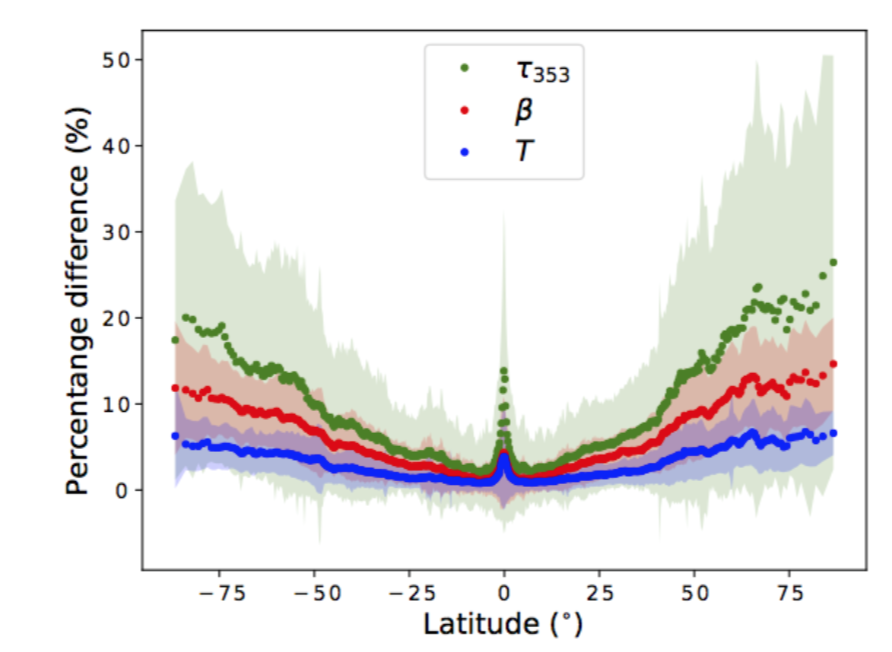Abstract
Component separation for the Planck HFI data is primarily concerned with the estimation of thermal dust emission, which requires the separation of thermal dust from the cosmic infrared background (CIB). For that purpose, current estimation methods rely on filtering techniques to decouple thermal dust emission from CIB anisotropies, which tend to yield a smooth, low- resolution, estimation of the dust emission. In this paper we present a new parameter estimation method, premise: Parameter Recovery Exploiting Model Informed Sparse Estimates. This method exploits the sparse nature of thermal dust emission to calculate all-sky maps of thermal dust temperature, spectral index and optical depth at 353 GHz. premise is evaluated and validated on full-sky simulated data. We find the percentage difference between the premise results and the true values to be 2.8, 5.7 and 7.2 per cent at the 1 sigma level across the full sky for thermal dust temperature, spectral index and optical depth at 353 GHz, respectively. Comparison between premise and a GNILC-like method over selected regions of our sky simulation reveals that both methods perform comparably within high signal-to-noise regions. However outside of the Galactic plane premise is seen to outperform the GNILC-like method with increasing success as the signal-to-noise ratio worsens.

